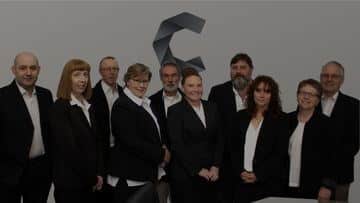For small businesses
100,000 new apprenticeships with 50% wage subsidy
The Federal Budget includes a new ‘Boosting Apprenticeship Commencements’ subsidy has $1.2 billion in funding and is aimed at creating 100,000 new apprenticeships over the next four years. The goal is to shore up the skills economy, which is under pressure due to the economic slowdown caused by COVID-19, while simultaneously creating work pathways for unemployed Australians to get skilled and to work.
What’s this mean for you?
Eligible employers will be entitled to 50% of the wages for new or recommencing apprentices capped at $7,000 per quarter. This extends the already existing subsidies that were brought in to assist businesses from March 2020.
JobMaker hiring credit for 16-35 year olds
The Government is introducing an incentive for businesses to employ staff and increase their headcount, called JobMaker Hiring Credit. This incentive will be payable for up to 12 months for each new job and is available from today (7 October 2020).
Given the current climate, there may be businesses that are looking to employ additional staff but need an incentive and JobMaker is targeted toward that. It will provide opportunities for businesses to receive assistance in employing staff, and reduce the risk for businesses by assisting with the wage cost.
What does this mean for me?
- Employers who hire eligible employees aged between 16 and 35 will enjoy a ‘Hiring Credit’ which will be paid quarterly in arrears at the rate of $200 per week for those aged between 16 and 29, and $100 per week for those aged between 30 and 35.
- Employees are required to work a minimum of 20 hours per week to qualify as eligible.
- Employers will need to demonstrate an increase in overall employee headcount and payroll for each additional new position created to be eligible.
Extended instant asset write-off
From 7.30 pm on 6 October 2020 until 30 June 2022, businesses with a turnover of under $5 billion will be able to fully write-off the cost of eligible depreciating assets purchased. This means businesses will get a tax deduction in the first year of purchase of these eligible depreciating assets.
This extension is great, and will hopefully stimulate business investments, as detailed in the Federal Budget.
What’s this mean for you?
- This will reduce taxable income. For example, a trucking business with a profit of $350,000 who purchased a new truck for $250,000 would only pay tax on $100,000.
- Note: The car limit still applies, and you can’t deduct more than $59,136 for a car.
- Businesses should be aware that the tax benefits of new equipment are at their tax rate, so consult your advisor to get more details on how this will affect you.
$2 billion additional R&D tax incentives
The Government has scrapped its proposed cuts to the R&D tax incentive, which sought to reduce R&D rates retrospectively, and is instead of adding an additional $2 billion to the program. From 1 July 2021, eligible businesses will receive an ‘R&D uplift’ at a fixed percentage above the entities company tax rate.
What does this mean for you?
The fixed R&D uplift percentage will be:
- For entities with an aggregated turnover of less than $20 million: 18.5%
- For entities with aggregated turnover above $20 million: The rate will now be either 8.5% or 16.5%
- This will depend on the businesses ‘R&D intensity’
- R&D intensity will be calculated at two tiers: Either 0-2% or above 2%, calculated as a portion of R&D expenses over total company expenses.
Other key changes are:
- The cap on refunds of $4 million has been scrapped
- The cap on expenditure has been lifted from $100 million to $150 million.
Incorporated small business loss carry-back
Companies with a turnover of up to $5 billion will be able to offset losses made in the 2019/20, 2020/21 and 2021/22 financial years with profits made in the 2018/19 year. This will help businesses who previously had profit (and therefore, tax payable) but now find themselves in a loss position.
What’s this mean for you?
Normally, if you make a loss it is carried forward to future years for you to offset against future profits. Under these new rules, you can instead ‘carry-back’ these losses which will essentially give you a refund of prior tax paid.
Losses incurred over the next three financial years can be offset against your business’ taxable profit made in 2018/19. This will be in the form of a tax offset which means businesses who elect to do this will receive refunds when their 2020/21 and 2021/22 tax returns are lodged.
Access to ten small business concessions expanded
To assist small businesses, in this year’s Federal Budget the Government is expanding access to ten small business concessions by lifting the threshold from $10 million to $50 million.
What’s this mean for you?
From 1 July 2020, businesses with turnovers up to $50 million can:
- Immediately deduct eligible start-up expenses.
- Immediately deduct eligible prepaid expenditure.
From 1 April 2021, businesses with turnovers up to $50 million will get:
- Exemption from the 47% Fringe Benefits Tax on car parking provided to employees
- Exemption from the 47% Fringe Benefits Tax on multiple work-related portable electronic devices provided to
- employees (such as phones or laptops).
From 1 July 2021, businesses with turnovers up to $50 million will have access to:
- Simplified trading stock rules
- Two-year amendment period for income tax assessments after this date
- The ATO created a simplified accounting method for GST
- Remit PAYGI based on GDP adjusted notional tax
- Settle excise duty monthly on eligible goods
- Settle excise-equivalent duty monthly on eligible goods.
For individuals
Accelerated personal tax cuts, backdated to 1 July 2020
The Government is bringing forward tax cuts that were meant to be in effect from 1 July 2022, and are backdating them to 1 July 2020. This will see an additional $17.8 billion in personal income tax relief to support the economic recovery. By doing this, the Government is hoping to increase spending by putting money back into the pockets of Australians.
Increased spending by Australians will help keep businesses operating, and ultimately keep people in jobs. With the impacts, the global pandemic is having on businesses and the unemployment rate nationally, this is a key focus.
What’s changing?
- Increasing the upper threshold of the 19% individual income tax bracket from $37,000 to $45,000
- Increasing the upper threshold of the 32.5% individual income tax bracket from $90,000 to $120,000
- The changes to the Low Income Tax Offset (LITO) have also been brought forward and increased from $445 to $700
What does this mean for you?
- In 2021-21, low and middle income earners will receive tax relief of up to $2,745 for singles, and up to $5,490 for dual income families
What’s next?
We expect that once the tax cuts have been legislated, the ATO will issue new tax tables to employers for the remainder of the 2021 tax year.
Superannuation: Employers to effectively stop offering default fund.
Currently, employers must pay your superannuation into their nominated default fund if you don’t provide your superannuation details. Under the new changes, super funds will now be stapled to individuals, meaning the fund will follow you as you change jobs.
This will reduce the number of accounts that people have, which will save in administrative and insurance costs. The Government believes this will save $450 million each year in unnecessary fees which should increase the super balances of everyday Australians.
What’s this mean for you?
From 1 July 2021, if you change employers your new employer will obtain your superannuation account details from the ATO if you don’t nominate a superannuation fund. This means your likelihood of having multiple accounts will decrease.
What’s next
As usual, all of the changes outlined in the Federal Budget need to be legislated first. Once legislated, we’ll let you know!





















